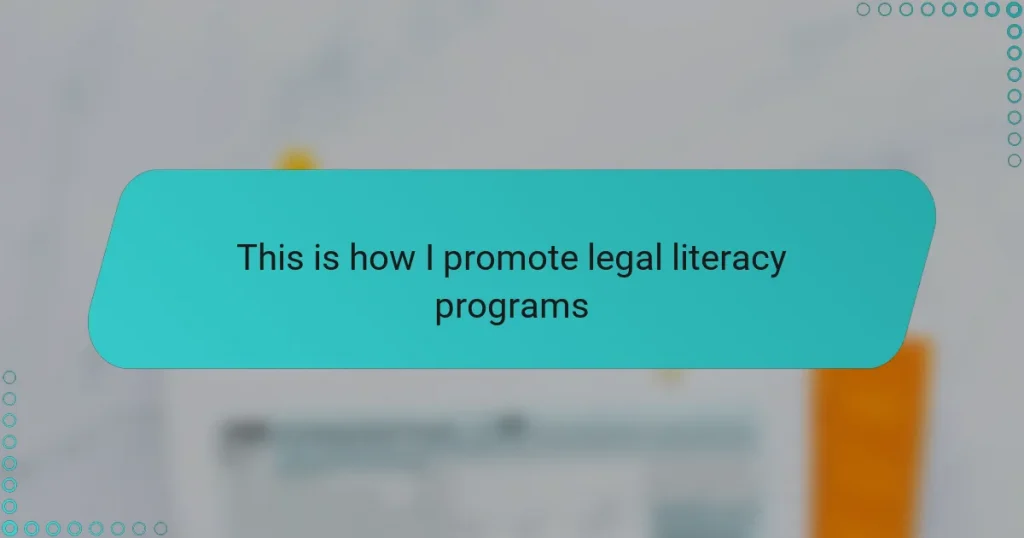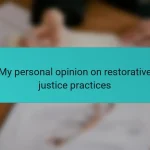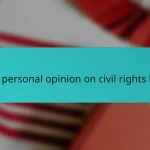Key takeaways
- Legal literacy programs empower individuals by making legal knowledge accessible, fostering confidence, and encouraging community advocacy.
- Effective programs connect legal concepts to everyday life through interactive learning and community engagement, making legal information more relatable.
- Building partnerships with local organizations enhances trust and relevance, enabling legal literacy to be integrated into daily community activities.
- Social media serves as a powerful tool for raising awareness and breaking down barriers, facilitating broader discussions around legal literacy.
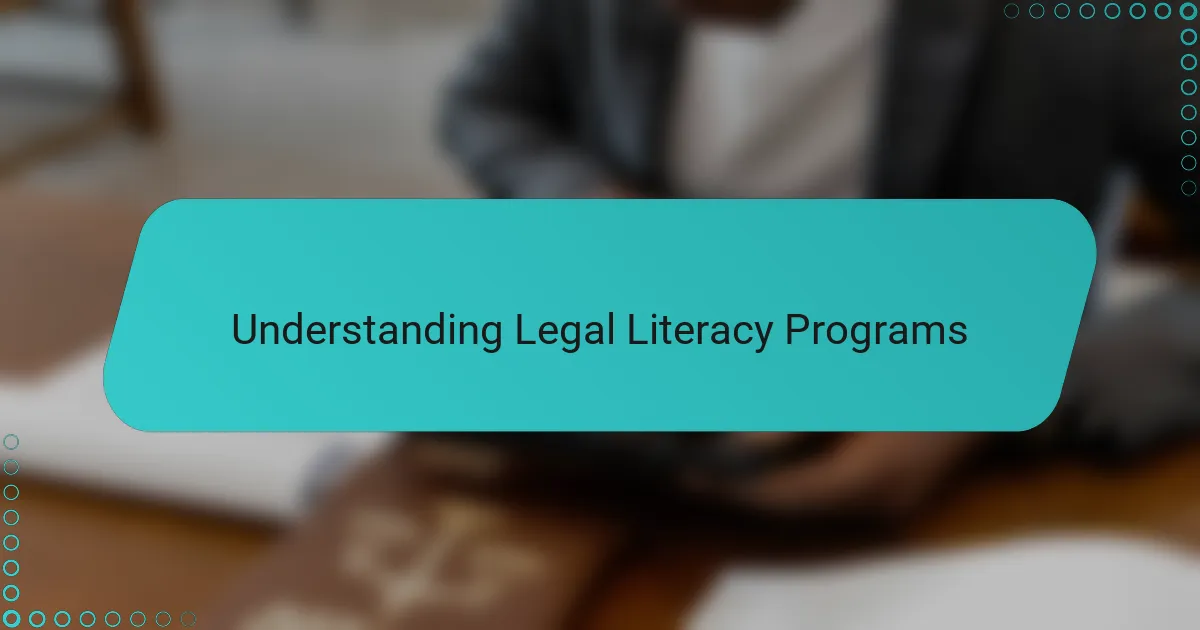
Understanding Legal Literacy Programs
Legal literacy programs are designed to empower individuals by making legal knowledge accessible and understandable. From my experience, these programs demystify complex laws, turning what feels like an intimidating maze into something navigable. Have you ever wondered why so many people shy away from legal issues? Often, it’s because they simply don’t know where to start.
What I’ve seen in my work is that when people grasp their rights and responsibilities clearly, they gain confidence and take control of their situations. It’s not just about legal jargon—it’s about building trust and breaking down barriers that keep communities vulnerable. When someone tells me, “I never knew the law could help me like this,” it reminds me how essential these programs truly are.
How do these initiatives really make a difference? They connect legal concepts to everyday life through practical examples and conversations, which resonates deeply with participants. I believe this personal touch transforms abstract rules into actionable knowledge, sparking a sense of empowerment that goes beyond the classroom.
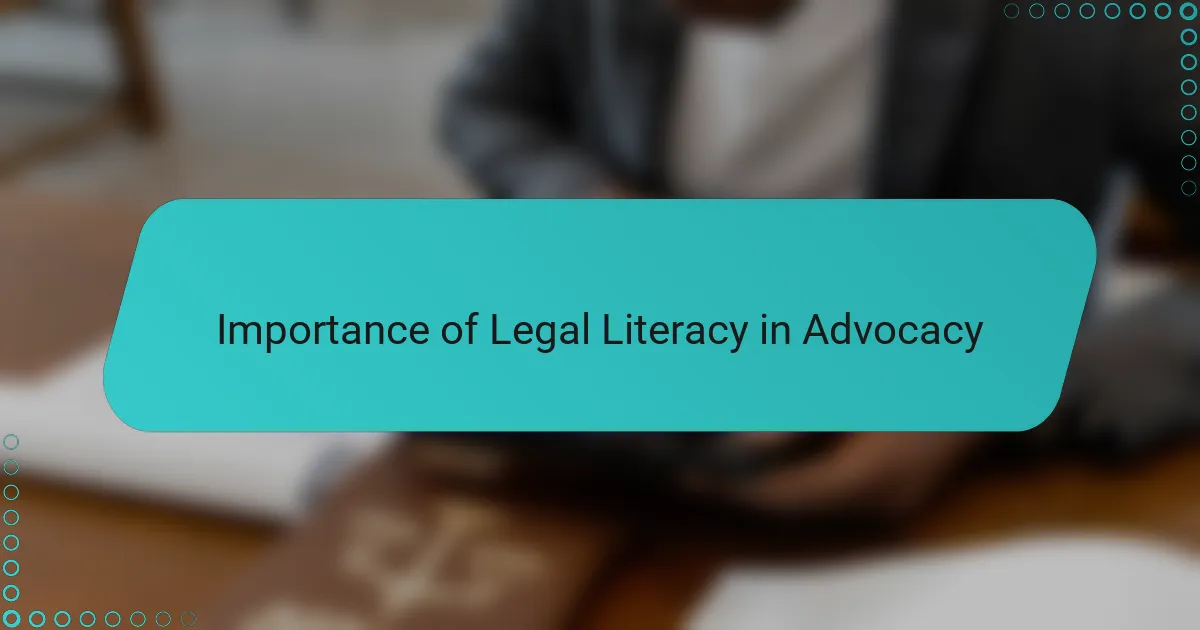
Importance of Legal Literacy in Advocacy
Legal literacy is the foundation of effective advocacy because without understanding the basics of the law, people are left powerless. I remember working with a client who felt overwhelmed by legal jargon until we broke it down into relatable terms. Once the fog lifted, the path forward became clear—and that shift in understanding was truly transformative.
Why does legal literacy matter so much in the bigger picture? It equips individuals to recognize when their rights are being violated and to speak up confidently. From my experience, empowerment through knowledge sparks a ripple effect—people become advocates not only for themselves but also for their communities.
When I see someone grasp their legal rights for the first time, it reminds me that advocacy isn’t just about changing laws; it’s about changing lives. Legal literacy plants the seed for lasting social change by turning intimidating systems into tools for justice. Could anything be more important in a world that often seems stacked against ordinary people? I don’t think so.
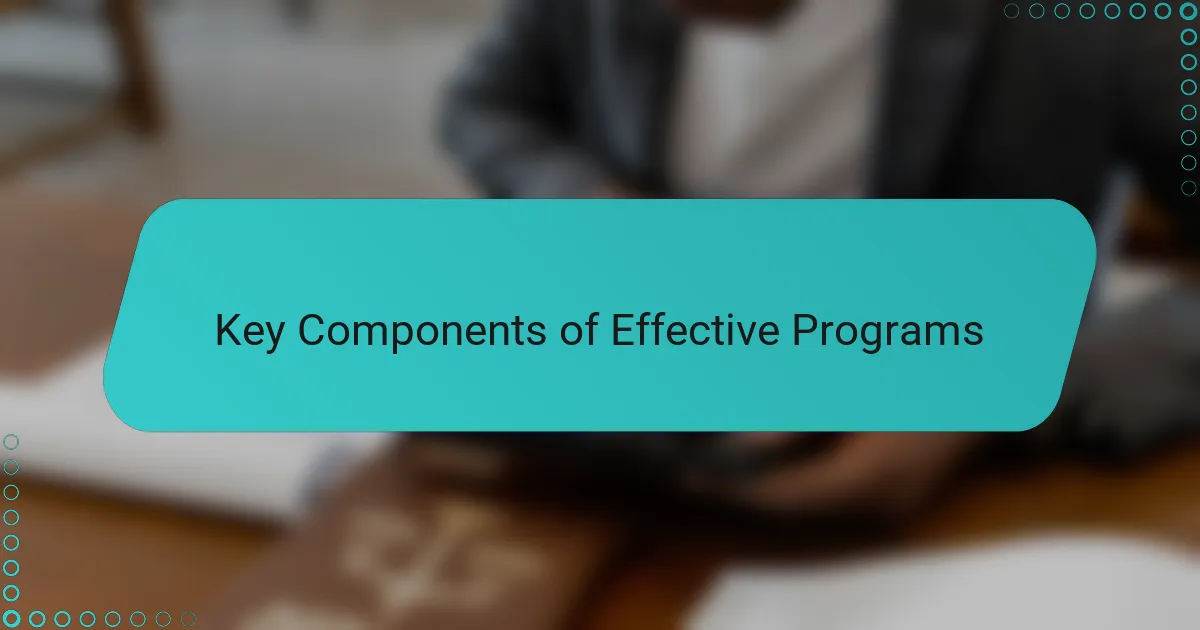
Key Components of Effective Programs
What makes a legal literacy program truly effective? In my experience, it starts with relevance—connecting legal concepts directly to the everyday challenges people face. When participants see how the law intersects with their lives, their curiosity ignites, and learning becomes meaningful rather than abstract.
Another essential component is interactivity. I once facilitated a workshop where role-playing real-life scenarios helped participants not only understand legal terminology but also practice using it confidently. That hands-on approach shifted their mindset from passive listeners to active problem-solvers, which is exactly what these programs need to achieve.
Finally, accessibility can’t be overstated. I often think about the people who turn away from legal help because language or complex formats intimidate them. To reach those who need it most, legal literacy programs must be offered in clear language, inclusive spaces, and through various formats—whether in-person, online, or through community partnerships. Without that, even the best information falls flat.
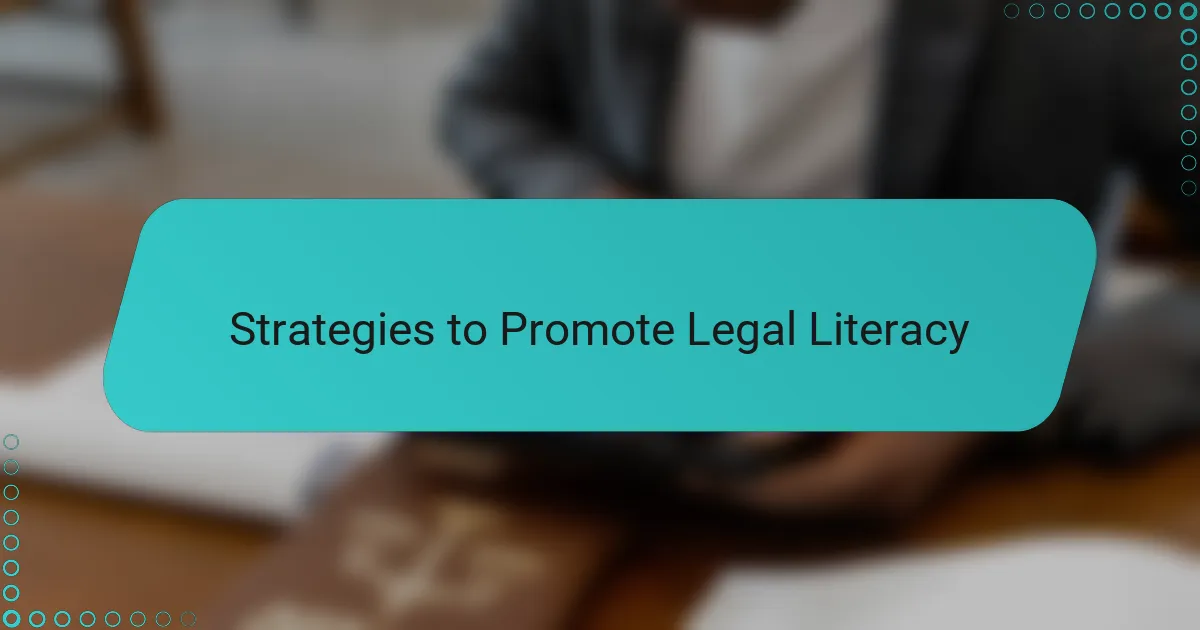
Strategies to Promote Legal Literacy
One strategy I’ve found invaluable is meeting people where they are—literally and figuratively. I remember going to community centers and talking with small groups over casual coffee chats. These informal settings break down walls, making legal topics less intimidating and more approachable. Have you noticed how much easier it is to absorb information in a relaxed, familiar space?
Another approach that’s worked well involves storytelling. In my workshops, I often share real cases or simple scenarios that highlight how legal knowledge can solve everyday problems. When participants hear those stories, their eyes light up—they see that the law isn’t just paperwork; it’s a lifeline. This connection between story and law creates a bridge that facts alone can’t build.
Lastly, collaboration with local leaders and organizations has been a game-changer. I recall partnering with a neighborhood group whose trust in legal institutions was thin at best. By working together, we co-created programs tailored to their unique concerns, and slowly, a sense of ownership and confidence grew. Doesn’t it make sense that legal literacy thrives when communities feel heard and involved? In my experience, it absolutely does.
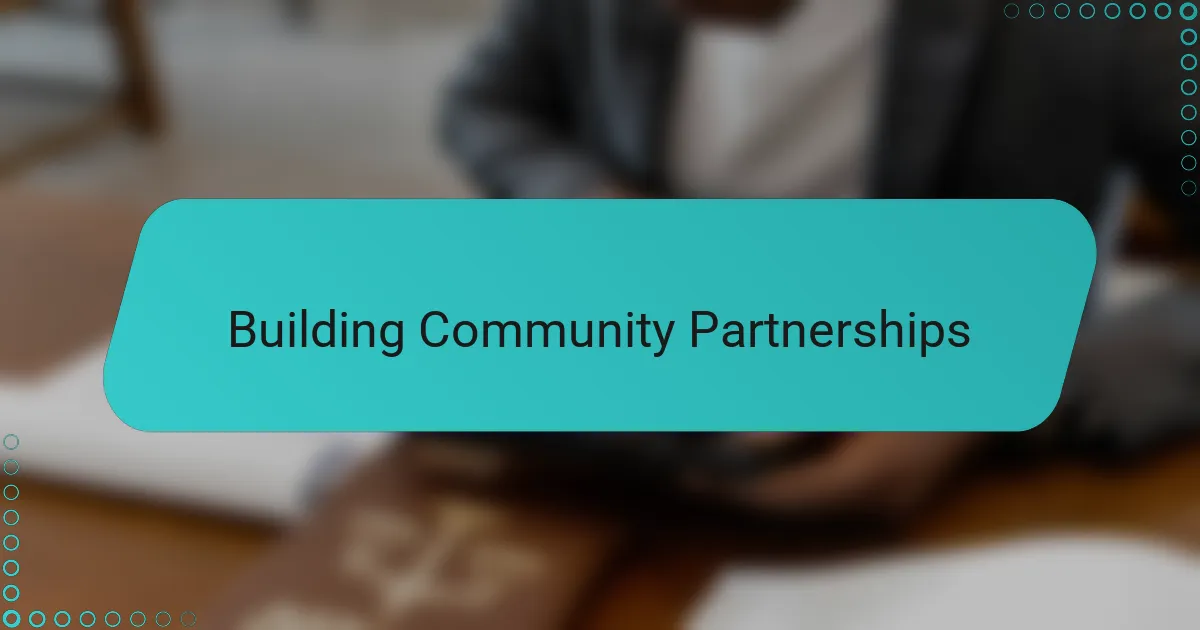
Building Community Partnerships
Building strong community partnerships has been a cornerstone of my approach to promoting legal literacy. I’ve found that connecting with local organizations—from schools to faith groups—creates a trusted bridge between legal resources and the people who need them most. Have you ever noticed how much more willing people are to engage when the information comes through familiar, respected voices?
One memorable partnership that stands out involved working closely with a community health clinic. At first, there was hesitation; legal discussions felt distant from their usual work. But by integrating legal literacy into their existing programs, we saw a remarkable change—participants began opening up about legal challenges affecting their health and well-being. That experience taught me how collaboration sparks relevance and trust in ways solo efforts simply can’t match.
Building these partnerships requires patience and genuine listening. I always ask myself: What do these communities truly need? And how can legal knowledge be woven seamlessly into their daily lives? When we answer those questions together, legal literacy becomes not just a program but a shared mission that empowers entire communities.
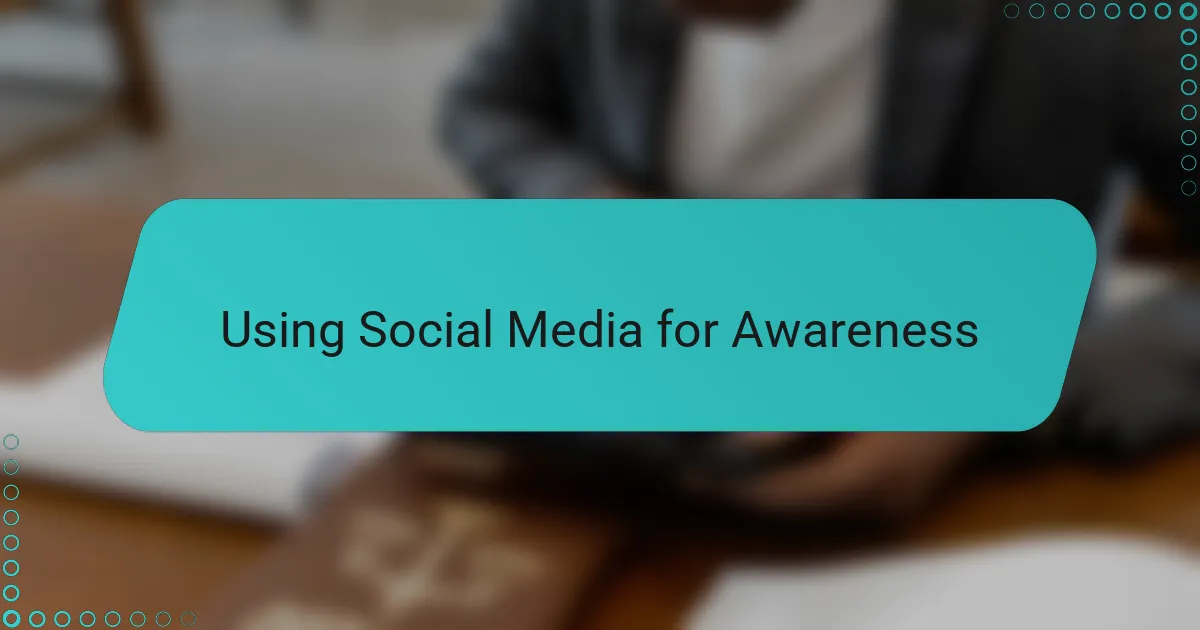
Using Social Media for Awareness
Social media has become one of my most powerful tools for raising legal literacy awareness. I’ve seen firsthand how a well-timed post or a short video can spark conversations that reach far beyond a single workshop room. Have you noticed how quickly information spreads when it’s shared through familiar platforms? That immediacy creates an opportunity to engage people exactly where they already spend time.
What really strikes me is how social media breaks down barriers between legal professionals and the public. When I share straightforward explanations or answer common questions online, it feels like opening a door to a room that was once closed. The instant feedback and interaction remind me that people crave accessible legal knowledge—they just need a welcoming space to find it.
Sometimes, I use social media to spotlight real stories of how legal literacy changes lives. Those narratives—from someone asserting their rights to a community standing up for justice—resonate deeply and inspire others to learn more. Isn’t it incredible how a few words on a screen can empower someone to take their first step toward understanding the law? That’s the power of awareness in the digital age.

Measuring Program Success
Measuring the success of legal literacy programs isn’t as simple as counting heads in a room. From what I’ve observed, it’s about tracking real changes—like when someone feels confident enough to ask questions or when they actually use that knowledge to solve a problem. Have you ever seen a participant’s face light up because a legal concept finally clicked? That moment tells me the program is hitting its mark.
I also consider feedback beyond surveys. Sometimes, it’s the stories people share afterward that reveal the genuine impact. I recall a workshop where one attendee later came back to describe how they used what they learned to help a family member navigate a legal issue. Those personal victories, though small on paper, are powerful indicators of success.
Finally, I think about sustainability—are participants empowered to pass on what they’ve learned? When people start discussing legal issues within their communities or come back to volunteer, that’s proof the program isn’t just a one-time event but a seed planted for ongoing awareness. Isn’t that what real success in legal literacy feels like?
